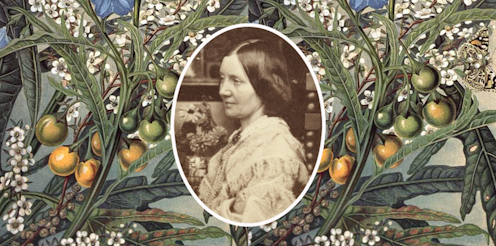Hidden women of history: the Australian children’s author who captured the bush – before May Gibbs’ Australiana empire
- Written by Lauren A. Weber, Lecturer in Literature, Language and Literacy, University of Wollongong

May Gibbs is a household name in Australia. Her most famous book, Tales of Snugglepot and Cuddlepie, published in 1918, has never been out of print. Chances are you have read her work, or had it read to you. You’ll almost certainly have seen her personified native flora illustrations, which these days adorn everything from tea towels to pyjamas.




